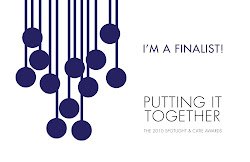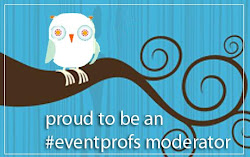Nine times out of ten, design articles and columns focus themselves on hot products, great ideas and the next best trend. Design writers want to share their latest event, a cool new product or the a crazy color combination. They obsess themselves with the things that we design with – linens and flowers and food and technology. That is to say most design articles focus themselves on the very practical, well received, easily digestible and highly desired content of decorations.
I think this is because decorations are tangible; therefore they are easy to understand. I can write a column all about what to do with ice (see last month) and you the reader will understand five interesting ways to use ice at their next event. But what does an ice sculpture - however cool - or, for that matter, a linen or a centerpiece idea have to do with design. Nothing. And everything.
The nothing part first. To Decorate. To Design. Both active verbs, but with different meanings and different outcomes. The term decorate is defined as the act of embellishing, of furnishing or adorning with something ornamental. When you decorate, you make something more attractive by adding ornament or color. By contrast the term design means thoughtful creation. Design implies a thoughtful intent to create something that is not only aesthetically pleasing but also functions. To decorate is to simply cover up for some purpose. To design is to reveal that purpose at its best and make it beautiful.
The designer knows why the design exists. The decorator doesn’t. Designing is making conscious decisions which are informed by your events purpose and which collaborate to communicate that purpose. Decorating also requires conscious decisions but void of intention, the décor exists often for its own sake because it is pleasing or beautiful. That is why a centerpiece, a buffet, or a linen on their own merit have nothing individually to do with the design of an event. They may be beautiful as individual elements or even in combination, but void of any correlation to the purpose of the event they are simply decoration.
This is not to say that there is anything wrong with decoration. I know and respect greatly a lot of people who decorate very well. And many times, our clients are only looking to us to be decorators – to make their events pretty or colorful or beautiful. And as decorators, we do this and all is well.
I said at the beginning that a linen or a centerpiece may have everything to do with design. And they do, when they are a part of the conscious plan of event and are chosen not for their own sake, but to be active contributors to the experience being created. When these individual elements work to contribute to the telling of a story or communicate the values of a brand, then they have a role to play in the design of the event. Then they exceed their own merit and contribute aesthetically and purposefully to the project.
So in this new year, I would like to take a chance with this column to advocate for the designer. That individual who sees and is inspired, and truly creates – a risk taking behavior which means finding something new (at least to them) which meets their clients need and in the art of its making, the design acts to communicate a value, a purpose, or an idea. And to ask more clients to seek design for their events in 2011 – to create experiences rooted in purpose, with the intent to communicate a message.
The great thing about being a designer is that you are part of a process. It is collaborative, creative, and messy, but in its success, together with your client, you end up making something greater than the sum of its parts. And through that process, not only does the event meet its key objectives – and the audience shares an experience worth having – but you and your client learn because you tried and you become better at your job because you took part in a process that continues on the next event and the next one and the next.




